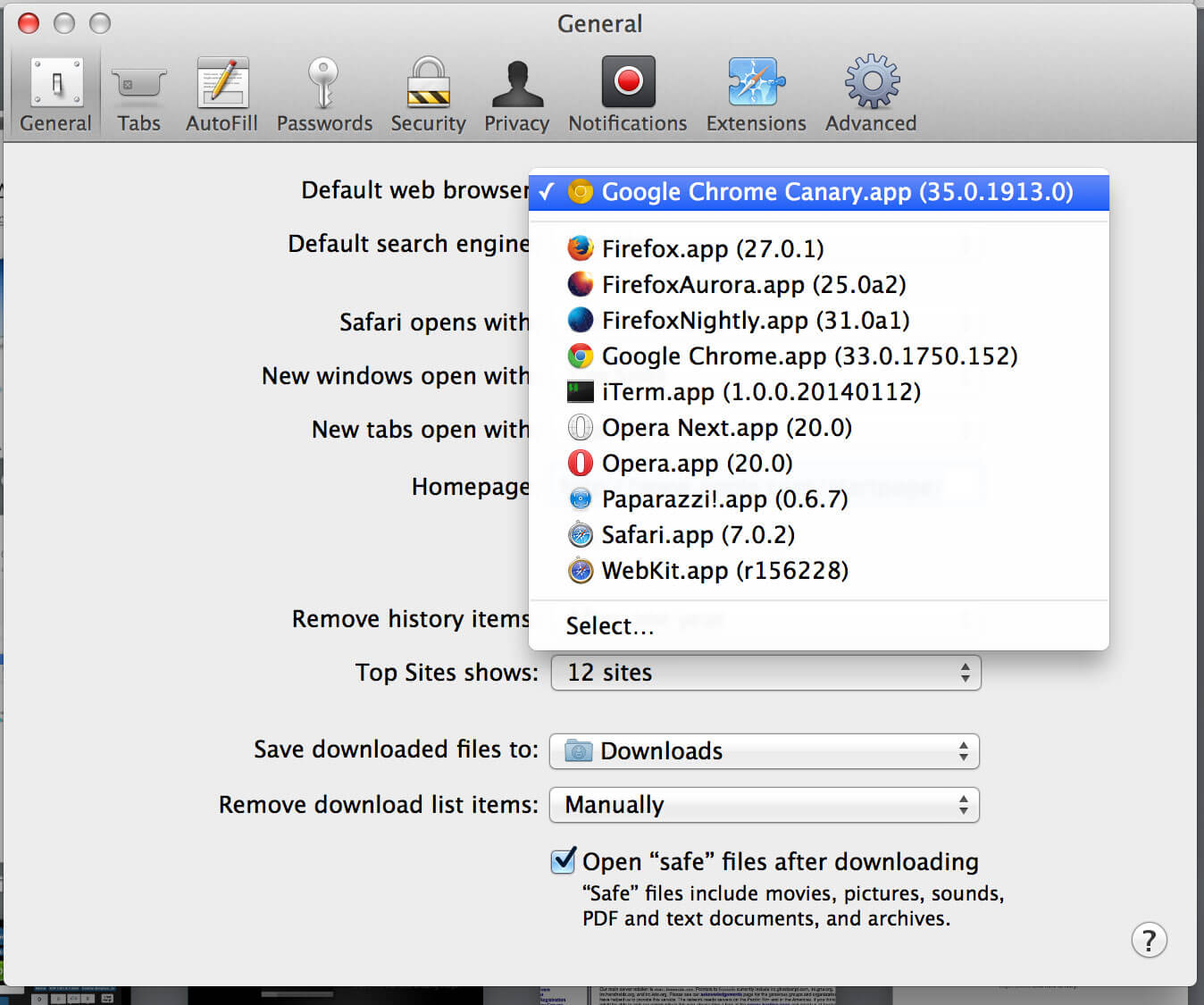Change your default web browser
- Omniweb
- 15. What Is The Default Browser For Mac Os X *
- What Is The Default Browser For Mac Os X 10 11
- Firefox For Mac
Omniweb

Feb 11, 2016 Now select the browser of your choice for example “Google Chrome” and enjoy surfing the internet. Now it’s time to change the default Email client in Mac OS X after Changing Mac OS X Default Browser from Safari to any other browser. Here are the steps on.
- Choose System Preferences from the Apple () menu.
- Click General.
- Choose your web browser from the ”Default web browser” pop-up menu.
Change your default email app
- Open Mail.
- Choose Preferences from the Mail menu, then click General. Or, if you're prompted to set up an email account, add your account, then choose Preferences from the Mail menu.*
- Choose your email app from the ”Default email reader” pop-up menu.
* You can also set your default email app in the preferences of your third-party email app.
Being the default browser shipped with every Mac, you are very likely using Safari as your main way of accessing the Web. Therefore, if something goes wrong where Safari either loads and runs slowly, crashes on startup, or is otherwise not functioning correctly, then you might find yourself in a bit of a frustrating situation. If you need to reset aspects of Safari in order to regain functionality, then even though the options for doing so are somewhat scattered, you can still use them to regain use of your browser.
Remove site history
Safari has its built-in tools for clearing temporary data that may be causing problems. To do this, go to the Safari menu and choose the option to Clear History and Website Data. If the problem you are experiencing only happened in the last hour or the past day, then you can try choosing the option here for encompassing that timeframe, otherwise you can remove all history data in this menu.
Alternatively, if you are finding problems happening only with one Web site you visit, then you can remove this data on a per-site basis:- Go to the Privacy section of Safari’s preferences.
- Click the Details button that appears under the “Remove All Website Data” button.
- Search for your site, and then remove only it from the list.
Clear Safari’s Web caches
Apple has somewhat hidden the options for clearing Safari’s caches (temporary local storage for a number of different settings and configurations), but they are still available:
- Go to the Advanced section of Safari’s preferences
- Click the Show Develop menu in menu bar option
- Select Empty Caches from this menu
Disable Extensions
Extensions give additional functions to Safari, but may also cause some problems if they contain bugs. Therefore, try going to the Extensions section of Safari’s preferences and sliding the setting to “Off.” Alternatively, you can try disabling plugins on an individual basis (each should have a checkbox for enabling/disabling), but first turning them off globally and then testing Safari will help indicate whether these are contributing to the problem. Also be sure you use the Updates button in these preferences to check for and install any new versions of your extensions.
Disable and manage plugins
Plugins handle specific internet content that sites may try to display for you, but also may cause problems when loading these sites. Therefore, as with Safari Extensions, you can try disabling them to see if this clears problems you are experiencing:
15. What Is The Default Browser For Mac Os X *
- Go to the Safari’s Security preferences
- Uncheck the Allow Plug-Ins checkbox
- Reload your Web pages, or optionally quit and re-launch Safari
In addition to disabling them in this way, you can manage plug-ins on a per-site basis by clicking the Website Settings button and then adjusting which sites are allowed, denied, or must ask for loading a specific plug-in.
Manual approaches
The above approaches should be most of what you need to clear and reset problems in Safari; however, if not then you can take more surgical approaches to clearing out Safari’s configuration data and getting the browser up and running again. Keep in mind that this approach will fully reset Safari and clear out your history, local bookmarks, and other settings, so be sure you make a backup of your system before doing this. Then quit Safari, and perform the following steps:
Remove Safari’s configuration folder:
- Open the Go menu in the OS X Finder
- Hold the Option key and choose the Library option that appears
- Move the “Safari” folder in here to your desktop
Remove Safari’s window state:
- Open the Library > Saved Application State folder
- Locate the “com.apple.Safari.savedState” folder
- Move this folder to the trash
Remove Safari’s application caches:
- Open the Library > Caches folder
- Locate all folders that begin with “com.apple.Safari”
- Move these folders to the trash.
What Is The Default Browser For Mac Os X 10 11
Remove Safari Cookies configurations:
- Open the Library > Cookies folder
- Remove the file called “com.apple.Safari.SafeBrowsing.binarycookies”
Remove Safari’s preferences:

- Open the Library > Preferences folder
- Remove any file that begins with “com.apple.Safari”
Remove user plug-ins:
- Go to the Library > Internet Plug-Ins folder
- Move all items from this folder to your Desktop (or elsewhere)
Remove global plug-ins:
- Go to the Macintosh HD > Library > Internet plug-ins folder
- Move all items out of this folder except the following plug-ins:
Firefox For Mac
These ones may also be removed for testing your situation, but should be replaced. In addition, if removing plugins does not show any difference in your browser’s behavior, then replace them. However, you can also replace them by downloading the latest versions from their developers’ Web sites.